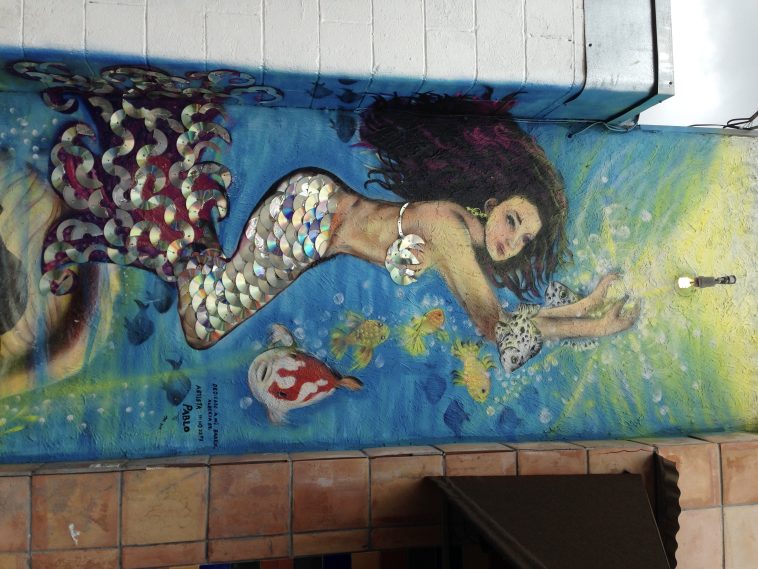In March 2016, I was asked to by the then-director of Alberta Main Street—a volunteer-run organization in our neighborhood in Northeast Portland—to come up with a proposal for haiku that could be etched onto art benches here and there throughout the Alberta Street arts district neighborhood. While the project never came to fruition, it was a fun exercise in figuring how how to make poetry—specifically using the brevity of the haiku form—convey history and culture in our corner of Northeast Portland.
As part of the process for coming up with “themes” for these haiku, I read through numerous reports and a cultural resource inventory, paying particular attention to the history of the street and the comments and stories shared by long-time residents of the community. I also took into consideration the proposed locations for these benches including the Black United Fund and the American Legion as well as the presence of a number of African-American churches in the neighborhood.
The Haiku Form
As far as the haiku themselves, I used this definition from an Oregon Poetry Association haiku contest as a guideline for content and form:
A haiku is a short poem that uses images and allusions to convey the essence of an experience of nature. English-language haiku are written in three unrhymed lines of seventeen or fewer syllables and do not follow the strict 5-7-5 syllable count of Japanese haiku. Since haiku express a moment in time, write them in the present tense. Be sure to include a seasonal word.
Traditional haiku often include references to the weather, the passage of time, to many kinds of symbolically significant flora and fauna along with the sun, moon, and stars.
For these “street-bench” haiku, I decided to use the convention of three lines employing the 5-7-5 syllable counts for two reasons. I think that is the definition of haiku familiar to most people; it’s generally the way haiku is taught in school, for starters. Since these words were to be on a public art bench, I wanted them to be visually “recognizable” as a haiku poem—even though many of the Japanese haiku poets (in English translation) do not necessarily follow this pattern.
I also chose this convention in homage to Richard Wright, the author of Black Boy and Native Son. In the last eighteen months of his life, Wright wrote around 4000 haiku while living in exile in France; over 800 are collected in the wonderful volume, Haiku: This Other World. Nearly all of his are written in the strict 5-7-5 syllabic pattern.
Below were my proposed haiku and suggestions for where they might be best located. If you know the Alberta neighborhood, you will recognize some of these landmarks!
1.
come all to hear spring,
its voice the gospel praised through
opening windows
I pictured this haiku on a bench that is closest to the site of one of the many churches that once were on Alberta as listed in the 2015 resource inventory or at the Cultural Totem Plaza at NE 14th Place just a few blocks from King’s Temple Church on NE 15th Avenue where glorious singing can often be heard if you are walking by on a Sunday morning!
2.
tonight’s Sturgeon Moon
makes the storefront mermaid’s disc
scales a rainbow shrine
There is a mermaid mural on the wall between La Playita Market and La Sirenita Taqueria across the street from the Black United Fund.
3.
this red line of sun
setting on dusk in autumn
spotlights bitter years
4.
how street trees bend with
winter rains, apostrophes
in the wind’s sentence
5.
And what do you make,
O fleet and diving sparrow,
of this grass grown roots?
6.
flower beds blooming
marigold, red salvia
shaped as Africa
This one could also work on NE 14th Place as it’s across the street from a garden planted in 1994 by Roslyn Hill at 1428 NE Alberta Street, now the location of Tin Shed.
7.
in an alley’s ruts,
memories of fallen pears—
pioneer fruit stock
There used to be many orchards of fruit trees in and around the Albert Street neighborhoods.
8.
before you arrived,
who were the people from here?
their stories remain
I saw this one on a bench near the American Legion since it’s located near Salt & Straw and Pine State Biscuits where so many newcomers and visitors to the neighborhood are often queued up for food and ice cream.
I chose to present all of these haiku with their two 5-syllable lines indented. This is the traditional visual presentation/form used by many translators of the Japanese haiku poets as well as by Richard Wright. Wright also capitalized each of his haiku lines and used end punctuation after the third line.
- Acceptance News: 2025 Rapid Response Anthology - July 12, 2025
- Don’t Fence Me In! - July 5, 2025
- Nothing to Celebrate Today… - July 4, 2025

